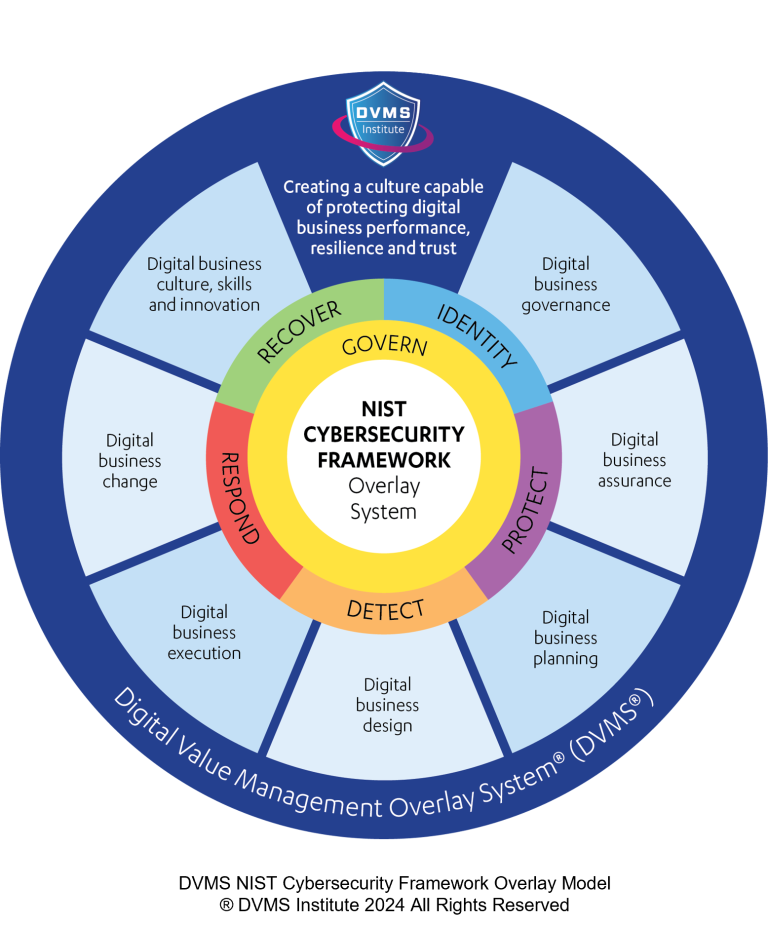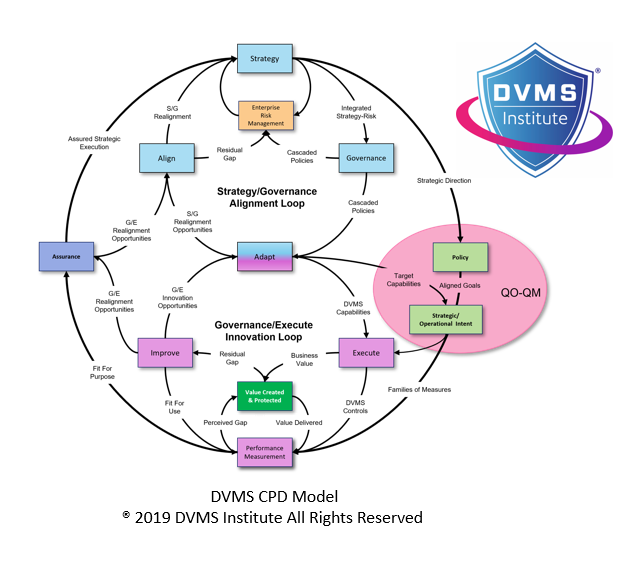The Culture Code – Unlocking Cyber Resilience in the Digital Age
By David M. Nichols, Executive Director, DVMS Institute LLC
The digital landscape presents a double-edged sword for organizations. Technology unlocks unprecedented opportunities for growth, innovation, and efficiency. However, this interconnectedness also creates a vast attack surface, making organizations vulnerable to cyberattacks. Building a cyber-resilient organization goes beyond technical solutions like firewalls and antivirus software in this ever-evolving threat landscape. It hinges on the foundation of organizational culture.
Culture: The Invisible Armor
Organizational culture encompasses the shared values, beliefs, attitudes, and behaviors that define how employees interact, make decisions, and approach their work. Regarding cybersecurity, culture is pivotal in building an organizational set of invisible armor.
A robust cybersecurity culture goes beyond simply knowing the rules. It’s about fostering a shared understanding of cyber threats and their potential impact. Employees must appreciate the risks associated with phishing emails, social engineering tactics, or weak passwords. This awareness motivates them to adopt safe online practices and report suspicious activity.
Cybersecurity isn’t just an IT department concern. An effective culture emphasizes collective responsibility. Everyone, from executives to frontline staff, plays a role in protecting the organizational digital assets. This shared ownership breeds a sense of vigilance and collective effort towards cyber defense.
Leadership: The Catalyst for Change
Leaders play a crucial role in shaping an organizational cybersecurity culture. Their actions and decisions set the tone for the entire workforce. Leaders must demonstrate a genuine commitment to cybersecurity. This involves allocating adequate resources for security measures, prioritizing security awareness training, and actively participating in cybersecurity initiatives. When leaders champion security, they elevate its importance and motivate employees to follow suit.
Effective leadership exemplifies responsible digital behavior. This includes using strong passwords, practicing safe browsing habits, and reporting suspicious activity. Employees are more likely to embrace security practices if they see their leaders doing the same. Articulating the “Why”: Cybersecurity often seems like a technical abstraction. Leaders need to translate the technical jargon into clear business terms. They should explain how cyberattacks can impact operations, finances, and reputation, connecting security and organizational success. This fosters a sense of shared responsibility and motivates employees to prioritize cyber safety. Cybersecurity shouldn’t be a passive exercise. Leaders must empower employees by providing them with the knowledge and tools necessary to identify and report suspicious activity. This includes training on phishing tactics, password hygiene, and reporting procedures.
The Pillars of a Secure Culture:
A robust cybersecurity culture goes beyond awareness and leadership commitment.
A culture of open communication is essential. Employees should feel comfortable reporting suspicious activity or mistakes without fear of reprisal. Leaders need to create channels for reporting concerns and establish clear procedures for incident response. This fosters trust and transparency, allowing for early detection and resolution of potential threats.
Creating a culture where employees feel safe making mistakes is crucial. Reporting a potential security incident shouldn’t be met with blame games. Openly discussing past incidents and learning from them helps prevent future occurrences and encourages employees to be more vigilant. This psychological safety empowers employees to be active participants in organizational cyber defense.
Cyber threats are constantly evolving. Organizations need a culture that embraces continuous learning and improvement. This involves staying informed about emerging threats, incorporating new security tools and tactics, and regularly conducting security assessments to identify and address evolving vulnerabilities. Regularly updated training programs and knowledge-sharing sessions are essential for informing and preparing the workforce.
Beyond Compliance: A Culture of Resilience
Traditionally, organizations focused on achieving compliance with cybersecurity regulations. While compliance is essential, it shouldn’t be the sole objective. A true cyber-resilient culture goes beyond checking boxes and embraces a growth mindset.
Cybersecurity incidents are not setbacks but instead learning opportunities. Leaders should conduct thorough post-incident reviews to understand what went wrong and how to prevent similar incidents in the future. Sharing these learnings with the broader organization promotes transparency and reinforces the importance of cybersecurity.
Recognizing and celebrating employees who identify and report suspicious activity or go above and beyond to maintain cybersecurity hygiene reinforces positive behaviors. Public recognition and incentive programs can motivate employees to take ownership of their cybersecurity responsibilities.
The Fortified Frontier: Benefits of a Security-Conscious Culture
In today’s digitally driven world, organizations operate on a vast frontier – the cyber landscape. This frontier offers immense opportunities for growth and collaboration but presents a constant threat: cyberattacks. While firewalls and encryption software provide a baseline defense, building a fortress requires a security-conscious culture. This culture goes beyond technical solutions and fosters a shared understanding and commitment to responsible digital behavior within the organization.
The benefits of cultivating this culture extend far beyond simply mitigating cyber threats.
The most effective security measure is a vigilant workforce. Employees’ awareness of cyber threats and best practices has become the organizational first defense. They can identify suspicious emails, recognize social engineering tactics, and report these potential breaches before they escalate into major incidents. This collective vigilance significantly reduces the surface of the organizational attack.
When a cyberattack does occur, a security-conscious culture facilitates a faster and more effective response. Employees who understand reporting procedures and feel empowered to act can minimize damage and expedite recovery. Open communication channels allow swift collaboration between departments, minimizing downtime and potential financial losses.
In today’s data-driven world, a cyberattack can have a devastating impact on an organizational reputation. Customers and partners place a high value on data security. A culture of security demonstrates the organizational commitment to protecting sensitive information and responsible digital practices. This transparency builds trust and fosters more robust relationships with stakeholders.
A robust cybersecurity posture rapidly becomes a key differentiator in an increasingly digital landscape. Organizations with a strong security culture demonstrate their understanding of the digital threat landscape and commitment to building a secure environment. This can be a significant advantage in attracting top talent, securing partnerships, and fostering customer trust.
A security-conscious culture fosters a sense of shared responsibility and empowers employees to protect the organization actively. When employees understand their role in cybersecurity, they become more engaged and invested in organizational success. This sense of ownership leads to a more proactive and collaborative workforce.
Effective cybersecurity practices lead to improved operational efficiency. Regularly updated software, secure data storage practices, and minimized vulnerabilities translate to fewer disruptions caused by cyberattacks. This allows employees to focus on core tasks instead of dealing with the aftermath of breaches or system downtime.
Cyberattacks can be costly, resulting in lost revenue, data recovery costs, and reputational damage. A security-conscious culture significantly reduces the risk of successful attacks, minimizing these financial burdens. Proactive security measures are often more cost-effective than reactive incident response efforts.
Pillars of Success
Leadership plays a crucial role in setting the tone. Their actions and decisions speak volumes. Demonstrating a genuine commitment to security through resource allocation, training initiatives, and involvement in security programs sends a powerful message to staff.
Leadership must foster open communication channels where staff feel comfortable reporting suspicious activity or mistakes without fear of reprisal. Transparent communication about past incidents and lessons learned builds trust and encourages staff to be vigilant.
Because the cyber threat landscape constantly evolves, training programs must be utilized to inform staff about emerging threats, best practices, and reporting procedures continually.
The organizational leadership team must cultivate a culture where staff feel safe reporting security concerns or admitting mistakes. Encourage open discussions about potential vulnerabilities and foster a learning environment over a blame-game culture.
Becoming a cyber-resilient organization should become an organizational core and mission-critical capability. Essential to that effort is building a security-conscious culture so the organization can confidently create, protect, and deliver digital business value. This culture imperative empowers staff, fosters collaboration, and strengthens organizational resilience against evolving cyber threats. In a world where a single breach can have devastating consequences, a security-conscious culture isn’t just an option—it’s a necessity for long-term success.
About the Author

Dave is the Executive Director of the DVMS Institute. The DVMS Institute’s mission is to teach organizations of any size, scale or complexity how to build a DVMS NIST Cybersecurity Framework Overlay System and Culture capable of mitigating cybersecurity risk to protect organizational digital performance, resilience and trust.
Dave’s role includes working with the industry’s leading practitioners in risk management, service management, project & program management, cybersecurity, assurance, and business leadership to produce industry-leading guidance and programs to enable organizations to survive and thrive in a digital business world.
Dave spent his “formative years” on US Navy submarines. There, he learned complex systems, functioning in high-performance teams, and what it takes to be an exceptional leader. He took those skills into civilian life and built a successful career leading high-performance teams in software development and information service delivery.
® DVMS Institute 2024 All Rights Reserved




